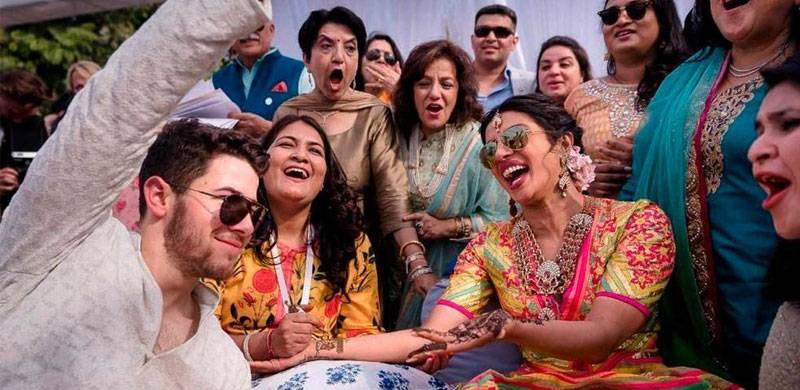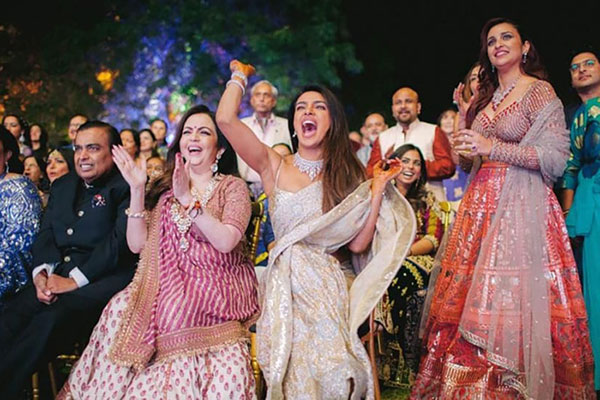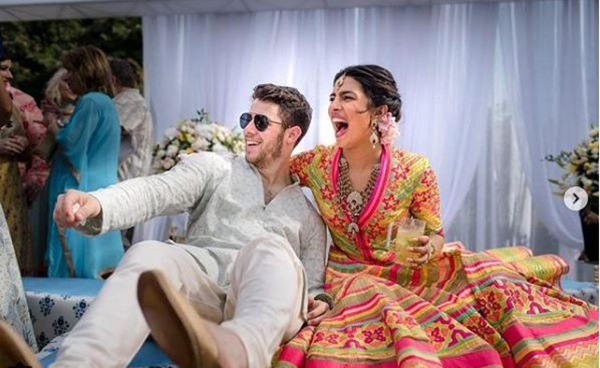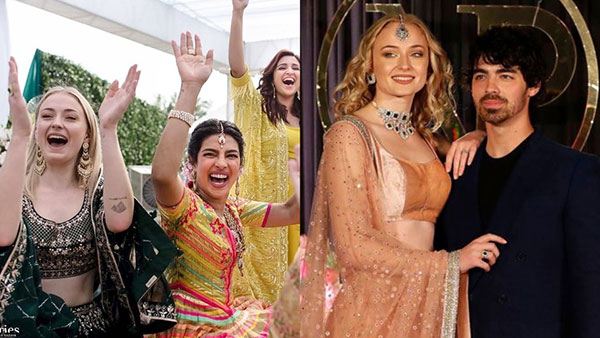
In South Asia,there’s no time like a wedding to express your displeasure. There’s something about a love marriage, especially, that compels sullen relatives to get into petty fights about not being invited to every single function. If they do get an invite, they spend the time passing comments about how over the top, or conversely how stingy, a wedding was; how the bride’s dress was too revealing or not modern enough; or even how the bride was smiling, or crying, too much.

But South Asian relatives have been given a run for their money by Mariah Smith, a writer for US magazine The Cut. In one fell swoop Smith displayed racism, ageism,and xenophobia that our“aunties” have been forced into checking since the advent of millennial political correctness. The Cut has since removed the article, calling it the result of “human error and poor judgment,” but it had already spread like wildfire on social media. Jonas’older brother Joe and his fiancée, Game of Thrones star Sophie Turner, stepped in to condemn Smith’s words.
Smith’s piece was pegged to the events of this past week, when Priyanka Chopra, an internationally acclaimed actor and entrepreneur, tied the knot with Nick Jonas, a singer and actor from the United States. Smith is uneasy about this marriage. Her main contention was that Chopra is a “global scam artist” who has tricked an unsuspecting Jonas into their union. Her basis for this allegation is that Chopra is older and browner than Jonas, thereby implying that a 30-something Indian woman is unworthy of a 20-something white man.
One wonders, if the situation was reversed and an older white man was marrying a younger brown woman, would anyone bat an eyelid?

Smith also accuses Chopra for having a desire for the finer things in life as well as alleging that the couple is posting sponsored content to “find ways for their relationship to make them money”. Chopra is hardly the first celebrity to flaunt diamonds; and the couple is simply following a long line of celebrity couples who have sponsored products together.
So what is it about Chopra’s consumerism that stings Smith? Perhaps the problem is not the earned wealth, but that it’s an Indian woman’s earned wealth?
Perhaps this article would touch on some truths if Bollywood’s elite was desperate for Hollywood’s validation, but that simply isn’t true. The idea that you’ve only ‘made it’ if you’re international is no longer valid. Moreover, even if it were true, many publications keep citing Quantico,the ABC-show starring Chopra, as her ‘big break’ into international media, forgetting that Chopra won the title of Miss World 18 years ago. That’s right, when Jonas was one year into his career – which he began at age 7 – Chopra was crowned the most beautiful woman in the world. The beauty pageant may have rightfully lost much of its appeal and credibility in the last 18 years, but it does lend some perspective on how hard Chopra has been working for almost two decades.
I’m not going to deny us all the petty pleasure of a take-down piece. But take-down pieces need wit and research. A take-down piece would first build Chopra’s celebrity: It would talk about her tear-jerking portrayal of a woman with autism in Barfi (India’s entry in the 2013 Academy Awards), or how she single-handedly carried blockbuster films such as Mary Kom and Fashion on her shoulders in Bollywood’s heavily paternalistic culture. The films earned approximately $15 million and $9 million at the box office, respectively. It would also describe how skilfully she almost simultaneously juggled the extremely disparate roles of Alex Parrish in Quantico and Kashibai in Bajirao Mastani in 2015.

And only then would the take-down piece be allowed to maybe point at how many people believe Chopra should ease up on her friendship with Indian Prime Minister Modi, under whose nationalism India is rapidly becoming dangerous for minorities. Or maybe a piece measuring if the allegedly politically woke Chopra has ever spoken against Bollywood’s rampaging casteism and elitism. A truly intersectional take down might even dare to bring up that anti-Black scene in Fashion. But Smith decided to take the laziest, oldest route possible: xenophobia.
And she wasn’t alone in her laziness.Vogue dedicated its January 2019 cover to Chopra and Jonas, but when the author wants to describe how beautiful she is, the best comparison she could find is “Sophia Loren–in–her–heyday pretty,” leaving us all to wonder if these brown-white comparisons will ever stop.
In the same vein, months ago when the couple announced their engagement, Fox News believed they were “shocking the world” without clarifying what exactly shocked them about two hot, affluent, grown-up celebrities falling in love.
But like Chopra, who had her first brush with racism when she was in high school in Newton, MA, South Asians have grown somewhat hardened to the more overt strains of racism. However, what Indians won’t overlook is the western world’s ignorance about wedding functions. Town and Country reports that “the Sangeet is a traditional pre-wedding party in Indian culture. What's not typical is a professionally-produced competition between two celebrity families.” Professionally produced competitions at Indian weddings are a concept so old that you hardly have to be a celebrity to afford it anymore — watch Hum Saath Saath Hain tonight if you don’t believe me.

Smith likens Chopra and Jonas’ Sangeet to the Academy and Tony Awards, without realizing that those sets have nothing on Indian weddings. The Indian wedding market is estimated at $50 billion. The country’s wealthiest citizens have the likes of Enrique Iglesias, Bruno Mars, and Jennifer Lopez flown in to perform at functions that are held at palaces (or at the very least palatial houses), where food tables can stretch up to 60 yards. Frankly put, for better or for worse, India has witnessed and will continue to witness weddings grander and more lavish than Chopra and Jonas’.
Just days before Chopra and Jonas got married, Bollywood superstars Deepika Padukone and Ranveer Singh tied the knot in Italy with chefs flown in from India. The wedding festivities began before November 14 in Bengaluru and ended in Mumbai on Dec 1. That’s roughly half a month. Padukone and Singh, despite belonging to the same religion, also had two wedding ceremonies, on two days, with two sets of outfits – one following Konkani traditions and one following North Indian traditions. In this context, Chopra and Jonas taking less than a week to celebrate, mix, merge and respect each other’s faiths and cultures seems perfectly natural.
So really, the only question she should have asked about the wedding was how Chopra and Jonas managed to only invite 225 guests to their Christian ceremony, which was held a day ahead of the Hindu ceremony. And how pissed are the relatives that didn’t make the cut?
